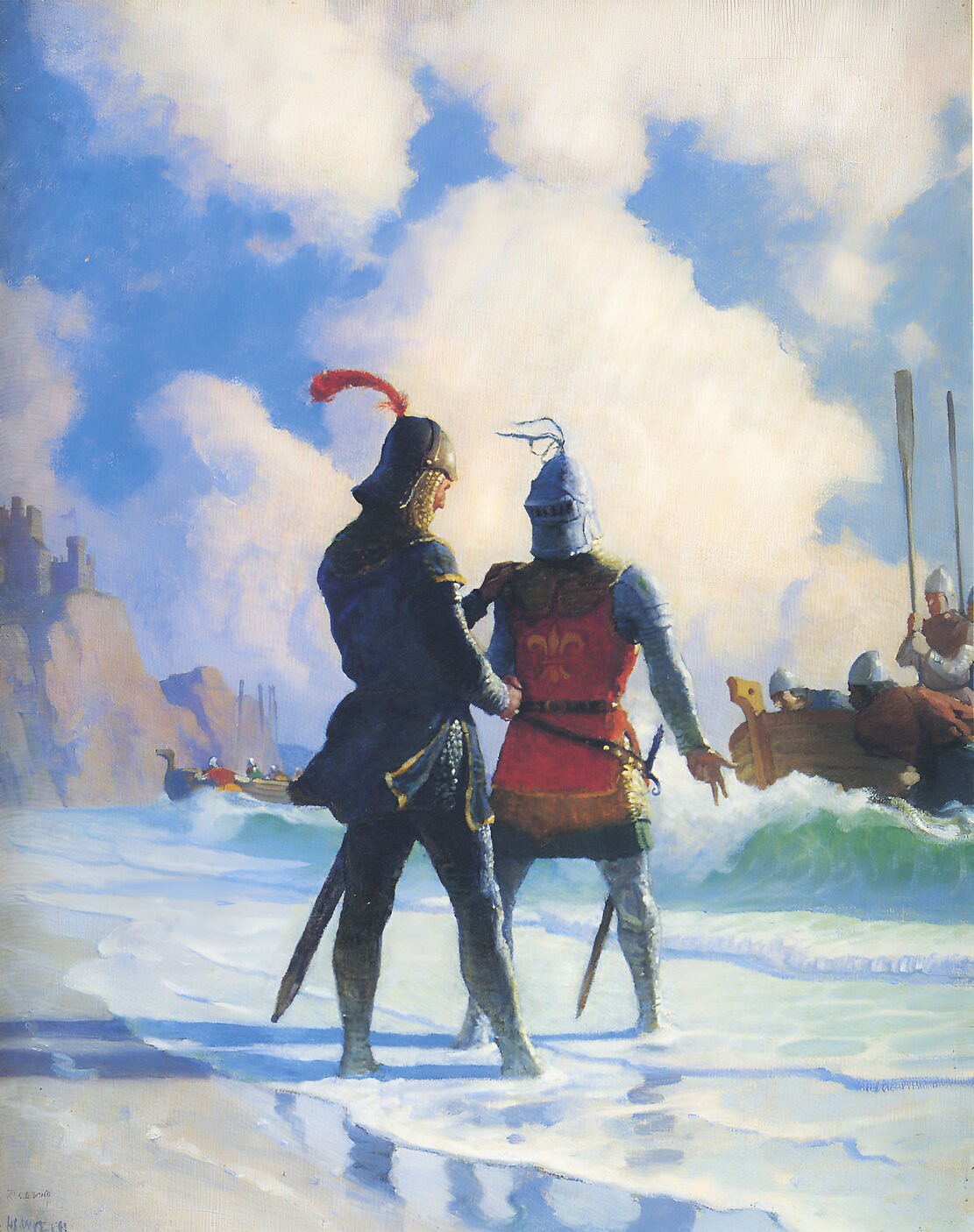If you’re picturing a knight in shining armor rescuing a damsel in distress, you’re not alone.
Consider the 1885 Frank Dicksee painting below, simply titled “Chivalry”.
So, there we have it—chivalry is rescuing a damsel in distress. Or is there more to it?
Continue dear reader as we delve a little deeper.

Our story begins in the deep, dark Teutonic forests of medieval Europe, where the warrior culture of Germanic horsemen combined with Roman traditions were molded by the Church into a civilized code of conduct based on bravery, disciplined training, and service to others. By the Late Middle Ages, the Code of Chivalry had become a moral system, combining warrior ethos, knightly piety, and courtly manners.
Warrior Ethos
Knights were mounted warriors, specializing in combat within a clan-like social caste.

They swore allegiance to their lord or monarch as a vassal—to protect, honor, and serve as a fighter in exchange for land holdings.
And when they weren’t fighting on the battlefields, they were testing their prowess in jousting tournaments.

There was strong camaraderie and respect among knights, even to those of the enemy.

As prisoners of war, knights were held for ransom in relative comfort—a courtesy not extended to lower castes like archers and foot soldiers, who were usually killed.
Knightly Piety
In addition to the earthly warrior ethos, spirituality in the form of Christianity was firmly entrenched in the Chivalric Code of knights.

Contains Amazon affiliate links.
In Geoffroi de Charny’s Book of Chivalry, he explains the importance of Christian faith in all aspects of a Knight’s life.
It was 1095 in Clermont, France. Pope Urban II pronounced that any knight fighting for the First Crusade would be exonerated from the sin of killing.

These words were like music to knights—if they fought in the crusades, they need no longer worry about their immortal souls.
Some joined the Church as a new type of order—the Templars and Hospitallers.
But while knights believed in defending God and the Church, most had their own independent strand of piety, separate from that of the clergy.

Courtly Manners
The word courtesy comes from 12th-century French courteis, meaning a behavior marked by respect for others, and polished manners. Besides displays of strength, skill and piety, knights were expected to behave in a dignified manner at court—to know dining etiquette and how to hold sophisticated conversation.

Courtly love—known in medieval France as “fine love”—originated with troubadours, who were composers and performers of lyric poetry.
A medieval tradition of love between a knight and a married noblewoman was considered a noble passion, and typically unconsummated.

In medieval literature, stories abound of knights setting out on adventures and performing services for their ladies.

At Knight’s End
In the late medieval period, new methods of warfare began to render classical knights-in-armour obsolete.

But the memories and the legend lived on.


